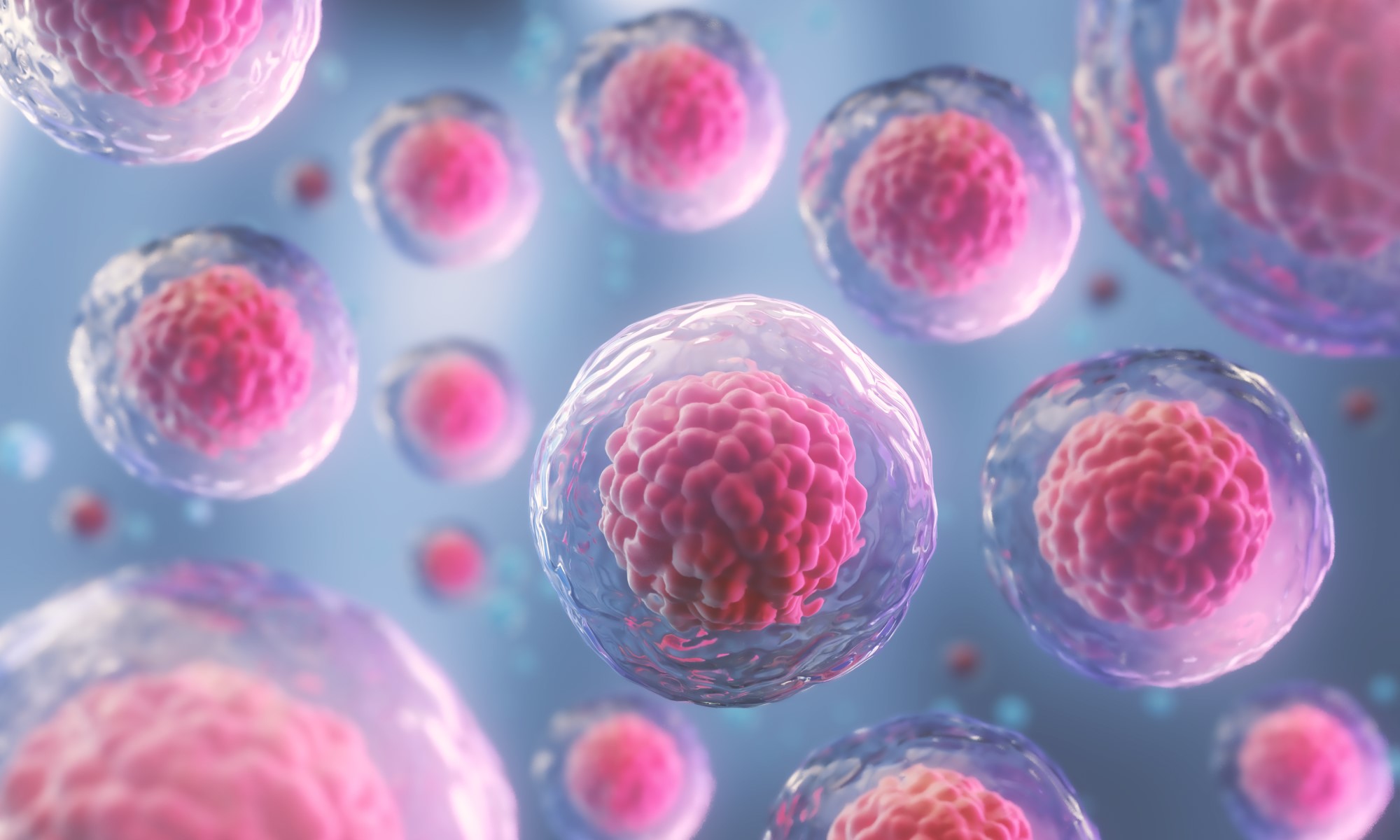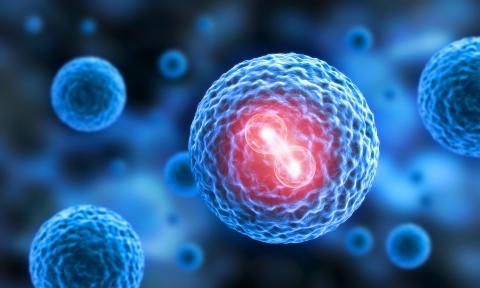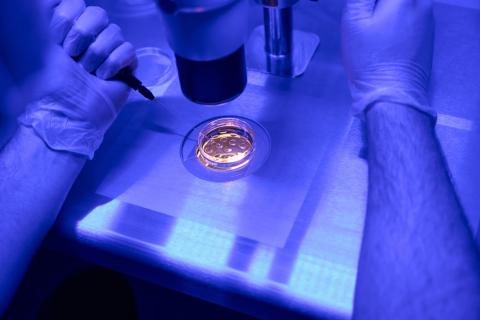Reactions to the two preprints on models of human embryos created from stem cells in the laboratory
The Guardian newspaper reported on Wednesday that Magdalena Zernicka-Goetz's team had announced the generation of synthetic human embryos from stem cells at the annual meeting of the International Society for Stem Cell Research in Boston. The author later denied on Twitter that they were synthetic human embryos and spoke only of models, warning that it was pending publication in a scientific journal. The day after the publication in The Guardian, and as reported in El País, Jacob Hanna and his team published a preprint - a publication that has not been peer-reviewed - in bioRxiv on models of human embryos generated from stem cells without genetic editing. A few hours later, Zernicka-Goetz's team posted their preprint on bioRxiv.

Gemma Marfany - preprints embriones EN
Gemma Marfany
Professor of Genetics at the Universitat de Barcelona (UB) and head of group at CIBERER
Human embryonic development is largely unknown from implantation and placenta formation, which occurs around day 7.5 post-fertilisation. However, these early days of embryo formation are crucial in explaining fertility problems and failure of apparently healthy embryos to implant. So far, our knowledge has been derived from studies in embryos of other mammals, but not everything is directly extrapolable. Regulations in many countries prohibit the in vitro study of human embryos beyond 14 days when embryo gastrulation and many organ formation processes begin. One way to overcome the lack of knowledge about human embryos is to generate "embryos-like" or embryoids from cultured embryonic cells. In these sets of cells, through genetic manipulation, it is possible to differentiate into different embryonic tissues and to study how this occurs and whether it recapitulates embryonic development.
Both Jacob Hanna's group (Israel) and Magdalena Zernicka-Goetz's group (UK and USA) have been investigating early embryonic development for some time. They use different methods of aggregating embryonic stem cells with different differentiation profiles (Zernicka-Goetz does this by joining cells transgenic for different differentiation factors, while Hanna uses unmodified pluripotent cells, mixed with others that are genetically modified). The result is human embryoids, or rather, synthetic models of human embryos that recapitulate features of early embryo differentiation.
Both refer to the generation of the amniotic sac (the extra-embryonic tissues that are biologically derived from the zygote but are not part of the embryo). The results, in preprint format, seem to support that the stem cell-derived embryonic models of Hanna's group are structurally more embryo-like, while those of Zernicka-Goetz's group would be less structured, but gene expression in these embryoids would support that they are differentiating into organ precursors.
At the moment, they have not gone beyond the stage of a 14-day-old embryo, but they are synthetic embryonic models, created by joining different stem cells, and are not a viable human embryo. There is still a lot of research to be done and the main question at the moment is how these models are categorised, i.e. whether they are considered human embryos or not. At the moment they are not, because they are not viable and do not manifest the full potential of a human embryo. These stem cell-derived embryonic models answer questions about the early stages of embryos, they look very much like embryos, but they are not human embryos. The problem is that they are in legal limbo in many countries, and it is not known which regulations apply to them.
We have to consider that the day when cellular and genetic manipulation techniques allow it, these models may have potential and viability, so it will be necessary to define - both from a bioethical-legal and scientific point of view - what they are and to determine what rules apply to them, how their generation is controlled and up to what point of development they can be investigated.
Alfonso Martínez - embriones preprints EN
Alfonso Martínez Arias
ICREA research professor senior and researcher in Bioengineering Systems-MELIS at Pompeu Fabra University
The two manuscripts are very different.
The aim is to reproduce human post implantation structures that combine extraembryonic and embryonic tissues. Both are derived from the first cell, the zygote, but only the embryonic ones will contribute to the fetus, the others will form a complex of membranes that feeds the embryo (the yolk sac) as well as protects it and attaches it to the mother through the placenta. When in these early stages people talk about three lineages they talk about the embryo, the yolk sac and the precursors of the placenta, the trophoblast. At day 14 from conception, the embryo becomes organized and starts gastrulation with the localized expression of the gene Brachyury and the development of germ cells.
With this in mind, we can look at the two manuscripts, briefly.
The one highlighted in The Guardian exclusive reports aggregates of cells of some, but not all, the lineages without a clear organization. The structures that form are difficult to interpret and only with the guidance of the authors can one gauge what might be going on. The cells are heavily genetically manipulated and exposed to high doses of various signals which might explain why they are so disorganized. There is no hint of gastrulation and it is very difficult to ascertain the age of the structures relative to embryos. Much of the identification of the cell types relies on a currently trendy technique that reveals the genes expressed by cells but, again, this needs interpretation and biases can be introduced in the analysis. What we should be looking at is a structure with spatially patterned gene expression; we don’t see much that resembles the structures in vivo. The manuscript does not contain much detail of how and why things happen and certainly does not support the statements made by the senior author to the press. Importantly, they might have triggered a premature discussion on these models which, anyways, was going on in the background and now might be rushed. In addition the manuscript ignores much work that has produced related structures with better accuracy and reproducibility, Essentially, nothing new or noteworthy.
The second preprint from Jacob Hanna, is different; a very sound and rigorous piece of work that recapitulates much of the development between day 7 and day 14. The structures are recognizable and can be related to the embryo. They form at a low frequency but some of them are remarkable copies of the natural structures. Two features are worth highlighting amidst many. The first one is that the authors managed to coax the cells to make those structures without genetic modifications, purely chemically. The second that they form so well even though they are not implanted. One might have thought that the involved organization of the structures might be influenced by the attachment but they don’t. Moreover they also report the initial stages of gastrulation. Perhaps this is not so surprising as many mammalian embryos e.g horses, implant after gastrulation. The work is well described with much detail which will help reproducibility which, nonetheless will not be easy, A great deal of the work is focused on defining the conditions for the experiment to work.
All in all this is a useful piece of work and an important advanced in the field. I should also add that J Hanna presented this work at a meeting in Japan on March earlier this year but obviously treated it with the discretion it deserves.
The first work does not have much to say to the ethical discussions. However, the second one does raise some ethical issues that, I am confident are being discussed, but I worry that The Guardian article might have brought to the fore a bit to early. A particularly important issue is the definition of an embryo from the perspective of these and other models. This is a necessary discussion. Nonetheless, there is little question of the value of these models to access important stages of human development that are nearly impossible to study. However, ethical overseeing needs to go apace with the technical advances.
“Have two patents on gastruloids, stem cell based embryo of mammalian development".
Bernardo Oldak et al.
- Research article
- Non-peer-reviewed
- Preprint
- In vitro
Bailey AT Weatherbee et al.
- Research article
- Non-peer-reviewed
- Preprint
- In vitro



